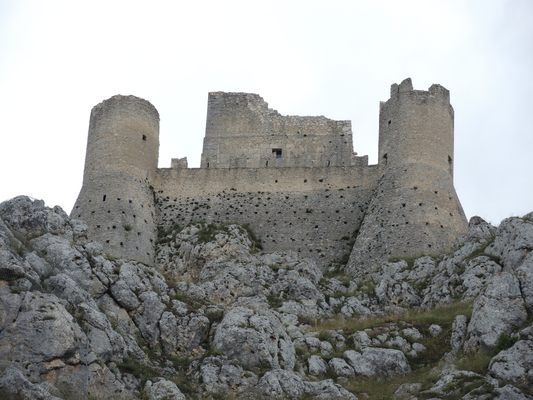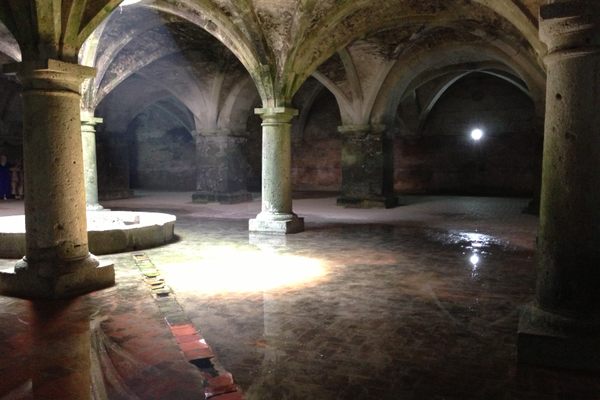About
In Middle-Earth, Rocca Calascio would be topped with a big pile of wood, ready to be set ablaze by attendants in Gondor’s moment of need. Here, on regular Earth, it was a military garrison and watchtower that kept tabs on the mountain meadows spread out below.
Perched atop a rocky peak 1,460 meters (4,790 feet) above sea level, Rocca Calascio is the highest fortress in the Apennine Mountains, which is the mountain range that runs the length of the Italian peninsula; it is likewise the highest fortress in Italy and one of the highest in all of Europe.
The structure started as a single watchtower built in the 10th century, and was gradually built upon and expanded over the following centuries to include four corner towers connected by walls enclosing the original tower in an interior courtyard. In the 16th century, it came under the control of the powerful Medici family, who were interested in controlling Abruzzo’s mountain roads to ensure the flow of wool to the Florentine cloth industry.
The fortress itself was built only to be a military facility, and included no accommodations for a civilian population. Nevertheless, a small village sprung up nestled close to the footings of the walls and supported a small community until an earthquake in 1703 destroyed the houses and the fortress. The villagers moved to the lower, safer town of Calascio; the fortress, being severely damaged and, by that point, of questionable use, was abandoned. Rocca Calascio has been an empty ruin ever since.
However, the commanding view for which it was built still exists and remains as breathtaking as it was a millennium ago. And though no scenes from The Lord of the Rings trilogy were filmed here, it was used as a filming location for The Name of the Rose (in which Sean Connery plays a crime-solving medieval monk) and served as the setting for the final scene in Ladyhawke.
Related Tags
Know Before You Go
Head up the windy road from town to the top.
Flavors of Italy: Roman Carbonara, Florentine Steak & Venetian Cocktails
Savor local cuisine across Rome, Florence & Venice.
Book NowCommunity Contributors
Added By
Published
April 1, 2016














































